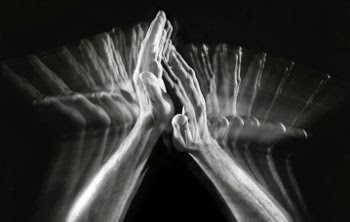On to the core of the music!

Are encores the untapped well of the music industry?
(Cit. modernservantleader.com)
A big part of my stint on Set.fm’s soapbox involved taking the time to point out that live music provides audiences with things they might not get to experience otherwise; or at least not in the same way more than that one time in that one particular place where they are. That’s the essence of live and the kind and quantity of unique moments an artist provides can make all the difference in their reputation for performance.
One idea that I did not mention, and nor did it cross my mind until now, is that of a particular type of song all its own. Every song is special and stands alone –at least (most times) in the eyes and ears of the people who write them. Still, music comes in brackets, and not just those defined by stylistic genre labels (which are currently being raised as a hot topic for possible future deletion, yet again, most recently by NPR in a Question of the Week.) There are dance pieces, ballads, remixes, seasonal songs, covers…these are classifications too but directed more toward sorting by written function than artistic flavor. Left out of this list and the particular song type I’m getting at, is the encore.
Violinist, Hilary Hahn, who, for the last few months, has been serving up lots of conversation on her new record with Cory Smythe, “In 27 Pieces,” seems to be treating ‘the encore’ as neither; not just a label of placement, nor an additional supplement made for supporting any of her existing performances much the way an epilogue is required to directly support and conclude a written story. The beginning of an hour long guest visit by Hahn to the Boston-based NPR show, “On Point with Tom Ashbrook” back in December, hears Hahn initially describe ‘the encore’ outside both the former statements:
“I think with encores, actually, there is no such thing as an encore as a form. It’s actually, a use of a certain length of piece. So, a lot of encores are transcriptions of movements of things or dances, or uh, you know, they could be taken out of a larger piece and played on their own; kind of like an aria from an opera. The aria is excerpted and stands alone.”
“…In this case, I wanted people to write things specifically for the encore slot in a program, which is, once the whole program is over, then the artist who’s been performing, comes out on stage if the audience is enthusiastic enough, and plays something the audience isn’t expecting, because it’s not written in advance. And at that point, the purpose of an encore is really to wrap up the performance, wrap up the evening. It probably has been a couple of hours of a program and then you really just get to, just, reflect on the whole program and, also be put into a whole separate mental space by this encore. So it’s kind of a big role for a piece to play.
However, with all these composers [that contributed to “27,”] they know what encores they’re heard that they’ve liked. They’ve seen a lot of encores performed but, they didn’t necessarily spend much time writing something that was specifically for that slot. But that said, they can be played in a program, as well as short pieces, uh, instead of just being put at the end.”
This sees the encore reshaped and repackaged in a three-fold way by Hahn and leaves this album available as inspiration for other instrumental and “classical style” artists to reflect on, or evolve from, for themselves. What though, of non-instrumental musicians?
Could a similar project be undertaken and executed for today’s artists in the spaces of music with verbally expressed themes? After all, any arena concert audience can scream and cheer enthusiastically enough to warrant one, two or even a whole mini-set of additional songs for performing after those printed on the set list are done. Would such an effort as “27’s” have the ability to spark the type of artistic and experiential disturbance that “27” is modeled after, or, would it be impossible, due to the pitfalls and limitations of language’s inclusion in music?
Imagine a show where not only does loud clapping and chanting earn you another round of music but as an extra potential bonus, what if the premise of the encore could become a prized experience and commodity unto itself? What if, to balance out the character difference between instrumental and vocally expressed music, encores for the mainstream were not only newly written material but stood alone, in that their performances at the end of concerts were always premieres?
Typically, unless trying out tracks destined to appear on soon-to-be-released records, contemporary bands fill their encore slots with unannounced, but still familiar, pieces from their back catalogs –usually fan favorites or, conversely, really obscure tracks that do not get a lot of chatter. Well, getting to hear a track, that nine months down the line ends up becoming a highly publicized #1 hit, typically gets people excited because of the “artist to fan intimacy” that any and all fans crave from musicians they keep high on rotation.
If encores were to become an extra special, bigger rarity of a sought after experience, the impact on live music would lead to a whole new level of value and interest. Perhaps even its own niche for business…




Leave a Reply